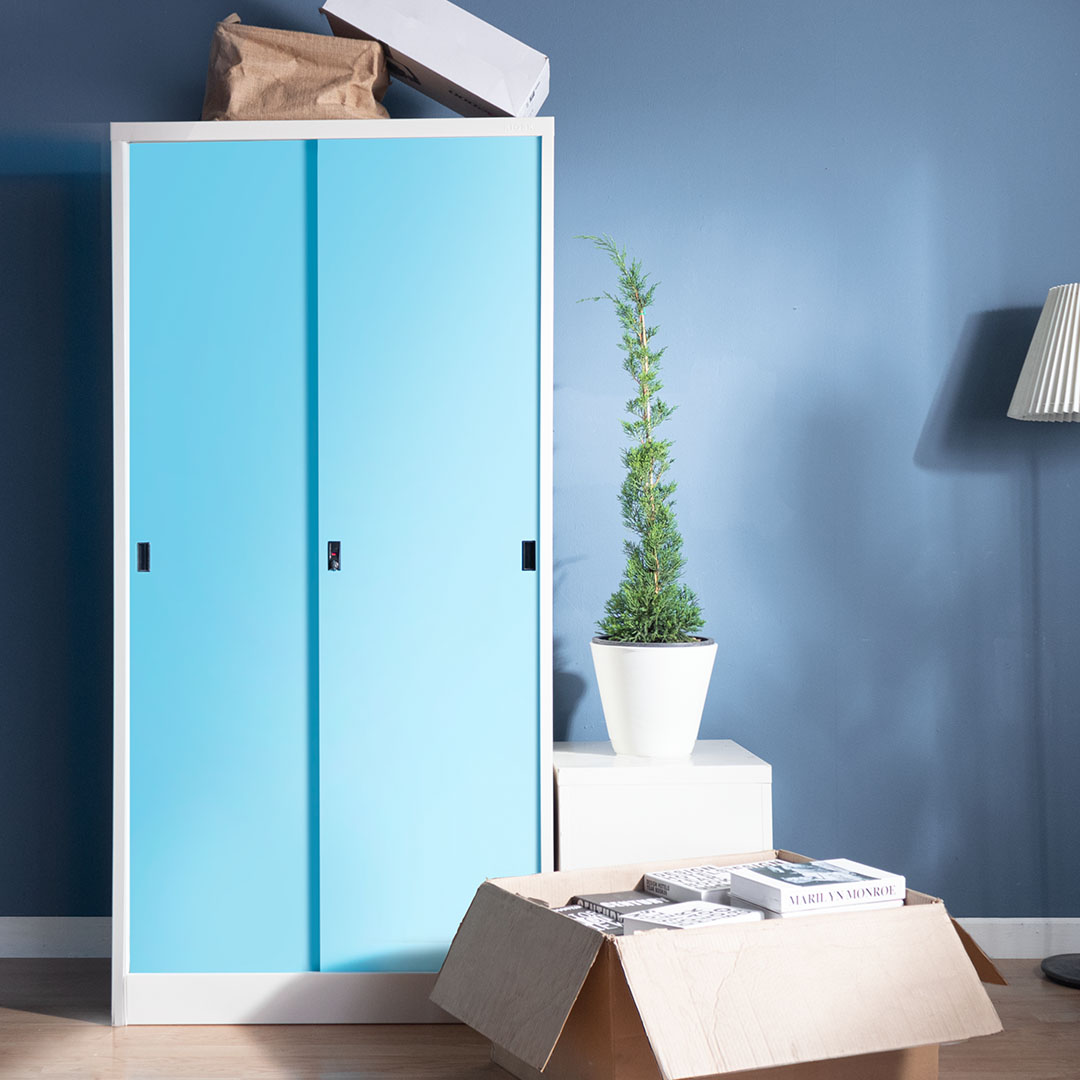Tips for Choosing the Right Steel Cabinet Size for Your Space
Tips for Choosing the Right Steel Cabinet Size for Your Space – Say Goodbye to Clutter!
Why Is Choosing the Right Steel Cabinet Size Important?
Selecting the right steel cabinet for your space is a critical step that’s often overlooked. If the cabinet is too large, it can make the room feel cramped and reduce ease of movement. On the other hand, a cabinet that’s too small may not fit all your items, forcing you to purchase additional storage. This is especially true in offices—steel file cabinets that are poorly sized can create clutter and disrupt organization.

7 Smart Steps to Choose the Right Steel Storage Cabinet Size
1. Measure the Installation Area Accurately
Use a tape measure to determine the width x depth x height of the area where you plan to place your steel cabinet.
If the cabinet will be placed in a corner or against a wall, make sure to leave at least 50–70 cm of clearance for the cabinet doors to open fully.
2. Calculate Your Actual Storage Needs
Steel file cabinets: Estimate how many A4 folders or documents you need to store. For a large volume, choose a 4-5 tier cabinet.
General steel storage: Consider the type of items (e.g., heavy tools) and choose cabinets made with thicker steel (1.2 mm or more) and reinforced shelves.
3. Choose the Right Cabinet Style for Your Use Case
Vertical Cabinets: Ideal for tight spaces as they utilize vertical space efficiently.
Horizontal Cabinets: Better for long items like wooden planks or pipes.
Locker-Style Cabinets: Perfect for segmented storage with clearly defined compartments.
4. Check Cabinet Specs Against Doorways and Hallways
Ensure that the cabinet can be transported into your space—measure door widths, hallway clearances, and stair dimensions to avoid issues during delivery.
5. Plan Your Room Layout Before Purchasing
Use room layout apps such as IKEA Planner or SketchUp to visualize the space and cabinet placement.
Avoid blocking light sources or walkways for a more functional layout.
6. Choose Cabinets with Adjustable Shelves
Steel cabinets with adjustable tiers allow you to maximize internal space, adapting to different item sizes or future storage needs.
7. Compare Sizes and Specs Across Brands
The same "120 cm cabinet" may differ in internal storage space depending on the manufacturer. Always read the full specifications including thickness, door type, and shelf load capacity.

Recommended Steel Cabinet Sizes for Different Room Types
Room Type | Recommended Cabinet Size | Why It Works |
|---|---|---|
Home Office | 80x40x180 cm | Fits 200–300 A4 files without occupying too much space |
Household Storage | 100x60x200 cm | Stores bulky or heavy items; ideal for corners |
Small Office | Stackable steel cabinets (2–3 sets) | Saves floor space and maximizes vertical space |
FAQ: Common Questions About Steel Cabinet Sizing
Q: What cabinet size is suitable for a small bedroom?
A: Choose cabinets under 150 cm tall and 50–60 cm wide. Light colors like white or soft grey can help the room feel more spacious.
Q: What are the standard sizes for steel file cabinets?
A: Common sizes include 80x40x180 cm (for 4–5 shelves) and 120x45x200 cm (for 6–8 shelves), which are ideal for most offices.
Q: What if I measure the space but still feel unsure?
A: Send photos or dimensions of your room to the seller along with your storage needs. Most retailers can help you select the right size cabinet.
Conclusion
Choosing the right size steel storage cabinet or steel file cabinet not only helps organize your space effectively but also improves room aesthetics and prevents unnecessary spending. Be sure to apply these tips before making your purchase—you’ll thank yourself later!
